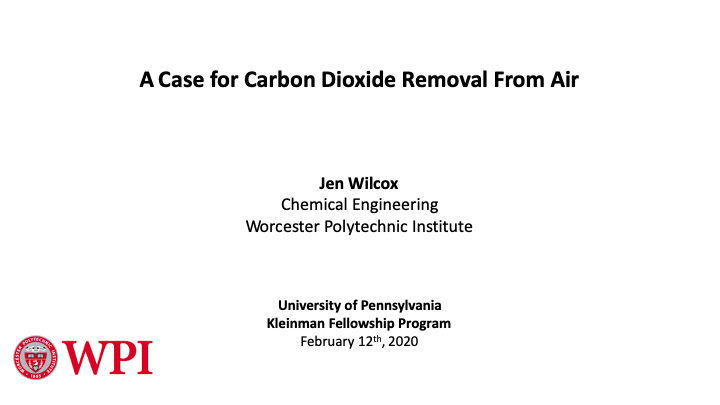
Exploring a Tool to Curb Climate Change: Direct Air Capture
We are behind the ball when it comes to achieving our collective climate goals. Negative emissions technologies, such as direct air capture, can potentially help make up for hard-to-eliminate carbon emissions.
The fight against climate change requires big efforts. Efforts to avoid emitting carbon dioxide but, equally, efforts to remove the already existing carbon dioxide from the atmosphere. Research shows that if we have any chance of hitting the targets outlined by the Paris Agreement, we need to do both: curb our current emissions and create negative emissions.
But what are negative emissions and how do we get them? Negative emissions remove CO2 from the atmosphere and store it on land, underground, or in oceans. Trees, for example, naturally create negative emissions. Technologies that remove CO2 from the atmosphere are generating growing interest and some have even demonstrated the ability to work at scale.
Download Slides:
“To meet climate goals, we absolutely first and foremost need to stop emitting CO2 at the rate we are today. But it’s not going to be enough. We also need negative emissions,” said Jennifer Wilcox, James H. Manning Chaired Professor of Chemical Engineering at the Worcester Polytechnic Institute and Kleinman Center Visiting Scholar.
As Wilcox stated in her talk, “there’s no silver bullet. Planting a trillion trees isn’t going to solve this.” Recently, President Trump’s announced that the U.S. will plant a trillion trees in a light attempt at climate change focused policy.
Last week, Wilcox captivated the audience at the Kleinman Center Forum in an exploration of direct air capture technology. Direct air capture works by using chemicals to remove CO2 from the air. This is similar to planting a synthetic forest. Some of the pros? The technology has the potential to be negative emissions technology, it is a good method for dealing with difficult to avoid emissions, and it doesn’t require arable land. But in the negative column, the energy inputs to create a plant are high and it requires a large land footprint. It also is still pretty pricey.

There are already places where this technology is being used. Climeworks, a company based in Sweden, has built 14 direct air capture plants globally. Their plants collectively have removed a total of 3,000 tons of carbon dioxide. That is not really an earthshattering amount of impact. So, there is still a lot of work to be done in making this technology cheaper, less energy intensive, and more effective.
And there are bright minds like Jennfier Wilcox and others working towards just that goal. Earlier this month, researchers from Rensselaer Polytechnic Institute (RPI) published in Science that they have developed a technology that dramatically improves the efficiency of the chemical conversion of CO2 to methanol. RPI says that this has increased the efficiency of CO2 to methanol conversation from 20% to 60% and could be deployed at fossil fuel plants to reduce emissions. With more researchers working in this area, improvements and breakthroughs can continue to happen.
In her talk, Wilcox referenced a study that highlighted the fact that in order to meet climate goals, we need to remove roughly 10 gigatons of CO2 a year until 2050 and then 20 gigatons a year from 2050-2100. That is a lot of carbon dioxide. Our climate change mitigation portfolio should include “both avoiding CO2 and removal of CO2 from the atmosphere, as both will be required at this late stage to meet our climate goals,” Wilcox concluded.
While it would be best to avoid all carbon dioxide emissions entirely, we know that is not a reality. Negative emissions technologies, such as direct air capture, can help bridge the gap and make up for those emissions we can’t easily eliminate. “We don’t really have a choice, we have to do it all at this point,” Wilcox remarked at the conclusion of her lecture. Indeed, we do.
For more on this topic, please watch Jennifer Wilcox’s Kleinman Center lecture on our website.
Mollie Simon
Senior Communications SpecialistMollie Simon is the senior communications specialist at the Kleinman Center. She manages the center’s social media accounts, drafts newsletters and announcements, writes and publishes content for our website, and regularly posts to our blog.


